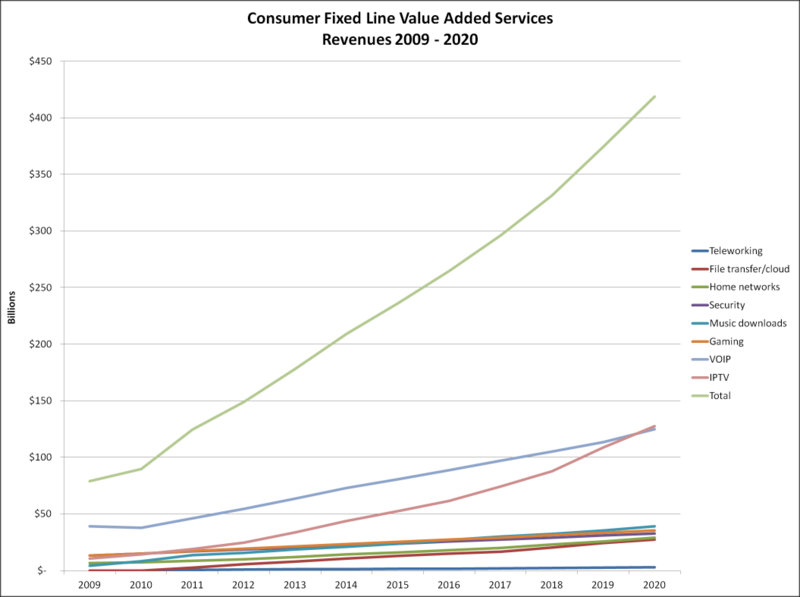I wrote this blog entry in planning my visit of the BBWF 2012 show floor.
OTT is creating a deep shift in the TV value chain. Most cord cutters or thinners actually leave their traditional pay TV service to go somewhere else, or trade down to a cheaper subscription. Someone out there is profiting. Even if a 100$ monthly spend becomes 10$, that’s still 10$ of fresh ARPU for the new guy.
But Hulu, Netflix, Roku, Amazon, Google, Apple, Microsoft beware: pay TV operators and even dusty old Telcos have realized that they too can be the new kid on the block when it comes to OTT TV.
But why would I be interested in an old pay TV operator, let alone a Telco, when all the sexy OTT upstarts are vying for my business?
One answer is data, or rather what has recently become known as Big Data. It’s adding fuel to traditional CRM and data mining, but also brings radically new service possibilities.
Like data mining Big Data is basically about aggregating data from user’s interactions with a given service and then number-crunching it in huge data centres to provide marketing teams with customer intelligence. One main goal has always been to improve and better target products to different markets and customer segments.
Data mining started as far back as the 1970s and by the 1990s it was an industry in its own right. But it has mainly been one dimensional, querying against a single relational database, or just maybe two or three interlocking databases. The most typical example is of a Supermarket chain analyzing data on the contents of shopping baskets to "mine" combinations of products that are purchased together (there's been a lot of mileage out of the good old beer and diapers case from the 1970s, where a marketeer - who wasn't yet called that - after analyzing shopping basket contents, realized that more beer could be sold if it was positioned in an aisle "on the way" to the diapers at least during weekends).
What’s new though is the explosion in different types of data, i.e. from all the screens in the house, and there’s also a huge increase in the amount of external data that can be collected from a range of sources including social media and messages. At the same time scalable cloud-computing architectures have come along to enable the data crunching to be powerful enough to get closer to real time answers, even when petabytes of data are involved.
So now instead of just realizing why subscribers behaved in a specific way in the past, Big Data will enable operators to optimize a service so it best suits what they will do in the future. For example providing near real-time content or service recommendations based on what the family is doing at the moment …
This is where Big Data will not only serve the interest of incumbent operators by giving them ammunition to fight off some of the OTT upstarts, but also bring new services to the end user. A few decades ago advertising was fun. But today TV advertising has become that period of time you either use technology to make disappear (i.e. with a PVR) or disappear yourself during the break. The truly personalized advertising that Big Data can enable could make it relevant and therefore interesting and oh so much more valuable.
You may be wondering what has this got to do with BBWF. Big Data has voracious appetite. This is where a broadband service provider can come in. 3G is often too slow, and is still capped in most markets, while 4G is still only in its infancy, so most content consumed in the home over IP will come through a broadband provider.
This means that a Home gateway is about the only place almost all user interactions go through. The gateway is also the hub of the home network where in-home usages like a child streaming a film dozens upon dozens of times can be captured to help personalize a service (who doesn’t have a few worn out Pixar DVDs that always amaze by still being playable despite all the scratches).
Where almost all operators have fared badly with their ambitious content plans, often closing down channels they created, OTT is giving them a second chance, thanks to the central role of the home gateway. Companies that are exclusively in the Cloud will never get such a complete picture of home usage. Operators with coherent gateway strategies on the other hand will be best placed to harness Big Data by combining the cloud and the home network most effectively.
So at this year’s BBWF I’ll be looking out for companies that will enable my vision of the future. I’ll post something after the event, but I know I’ll look out at least for:
- ADB that has extensive tools for monitoring home network usage,
- Axiros that have championed and extend TR-069 to get it to carry more information than in the original spec,
- Broadpeak who has made me curious with their new nano-CDN technology,
- Cisco who’s new acquisition NDS have been championing Big Data for a while,
- SoftAtHome with a compelling hybrid CloudAtHome approach,
- Witbe and any other QoE companies that are monitoring retail devices.
See you there?


